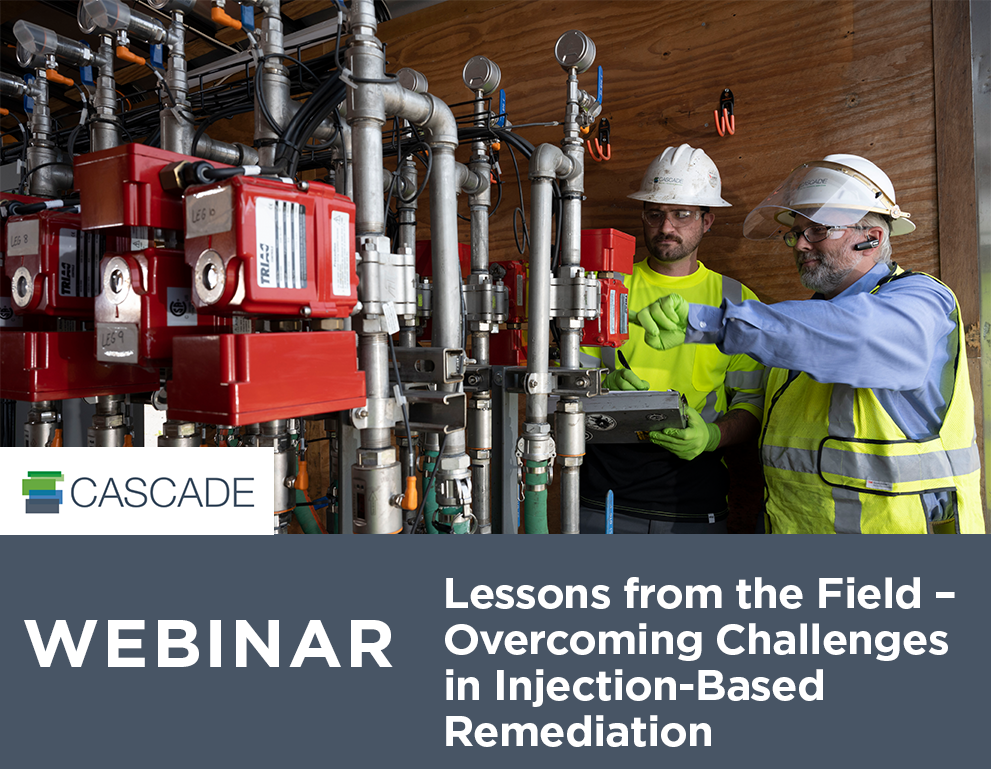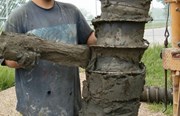This three-part series explores how in situ stabilization (ISS), soil mixing, and trenchless permeable reactive barriers (PRBs) are transforming remediation design and performance for redevelopment, containment, and deep groundwater challenges.
Led by Cascade’s technical experts, each session highlights the real-world considerations that drive technology selection, including treatment depth, contaminant profile, and redevelopment goals. Learn how an integrated in situ solution reduces risk, simplifies implementation, and delivers lasting results across complex site conditions.
Part 1: In Situ Stabilization for Contaminated Soil at Sites Undergoing Redevelopment
January 14, 2026 | 10 AM PST/ 1 PM EST
Presenters: Paul Lear, Ph.D and Ed Zielanski P.E.
Learn how ISS can simplify remediation for redevelopment projects by reducing excavation and disposal costs and accelerating schedules. Learn practical strategies to integrate the stabilized soil mass into site plans, including foundations, utilities, and grading. See real-world examples of ISS supporting commercial and residential redevelopment, and gain actionable insights to control costs, stay on schedule, and achieve predictable outcomes.
Part 2: Using In Situ Soil Mixing for PRBs or Barrier Walls
February 11, 2026 | 10 AM PST/ 1 PM EST
Presenters: Paul Lear, Ph.D and Deborah Shaffer (Schnell) P.E.
This session shows how in situ soil mixing helps meet cleanup goals by reducing excavation, minimizing spoils, and simplifying permitting. Experts will share insights on using soil mixing for barriers in challenging conditions, where it works best, and where it may not, supported by real-world examples and strategies for managing risk and timelines.
Part 3: Deep Groundwater Remediation with Trenchless PRBs
March 11, 2026 | 10 AM PST/ 1 PM EST
Presenters: Deborah Shaffer (Schnell) P.E. and Ed Zielanski P.E.
Facing deep contamination or complex geology? This webinar explores how GeoSierra Trenchless Permeable Reactive Barriers (PRBs) deliver effective groundwater remediation with minimal site disruption. Learn how trenchless installation reaches depths of 150 feet or more, reduces long-term costs, and supports sustainable cleanup goals. Our experts will share proven strategies, design considerations, and real-world examples so you can tackle tough sites efficiently and achieve durable results.
About the Presenters
 |
Edward Zielanski, P.E.Vice President of Operations, Civil & Environmental ConstructionEd Zielanski, PE, is the Vice President of Operations at Cascade for the Civil & Environmental Construction division based in Westampton, NJ. He has proven technical, project management, and leadership experience from his 25+ year career in environmental consulting, capital project delivery, and remediation contracting. |
|
|
Paul Lear, Ph.DSenior Technical Director, Civil & Environmental ConstructionDr. Paul Lear, a leading authority in stabilization/solidification (S/S) technology, brings over 30 years of experience in full-scale remediation projects to Cascade. As a key technical expert in In Situ Stabilization (ISS), Dr. Lear has pioneered numerous groundbreaking advancements in the field. Dr. Lear's expertise extends internationally, with notable achievements such as the first S/S of organic wastes in Australia and the first large-scale S/S treatment in Canada. |
|
|
Deborah Shaffer (Schnell), P.E.Director of Project Management, Civil & Environmental ConstructionDeborah Shaffer (Schnell) is the Director of Project Management at Cascade. She is a leading national expert on permeable reactive barriers (PRBs), hydraulic and pneumatic fracturing, and in situ technologies such as in situ chemical oxidation (ISCO) and in situ chemical reduction (ISCR), with a focus on amendment distribution. Deborah works with clients to select the best remedial technology for their sites, based on data presented in their conceptual site model (CSM), project timelines, and budget. |













